Floor covering is the term generally described for any Finish material applied over a floor structure to provide a walking surface.
Flooring denotes the work done for installation of such floor covering.
In general, Both the terms refer to the same but the term floor covering refers to loose-laid materials.
Before any hard flooring the floor surface has to be prepared to an even level using filler material like murram and a rough finish of 1:5:10 or 1:4:8 concrete covering so as to give the desired level/slope to the floor and to take any loads.

Good Surface preparation for flooring
Depending on materials used to cover the floor, flooring can be of various types
1. Mud Flooring
Mud is the easiest form of material available for building construction. It has been adopted for various elements in the house in different forms. Mud Floorings have mostly been adopted in village housing from age old days. Besides being economical, mud is readily available and the flooring is easy to construct and maintain.
2. Cement Concrete Flooring
Cement concrete flooring is one of the most common types of flooring. This type of flooring is quite durable, easy to construct and maintain besides being economical as compared to tile, marble and other such type of floorings.
Precautions: The main precautions to be taken while preparation Cement flooring is the water content in the final mix. If the water is in excess it may lead to cracks on the finish. A good mason marks square blocks in the finished concrete floor so as to localize any cracks which may appear in future.
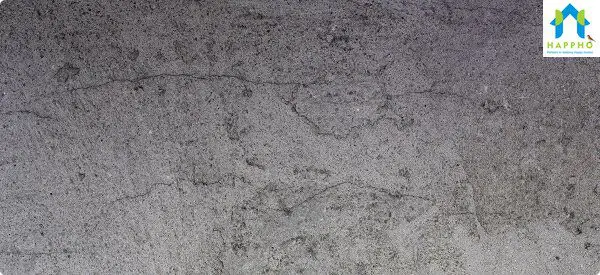
Cement Concrete floor with high moisture Content

Ideal Finish for Cement Flooring
3. Tiled Flooring
The flooring done with tiles is Tile flooring. Generally tiles are stuck onto the floor with the help of an adhesive over base surface. Care should be taken while application of Adhesive being:
- The adhesive should cover the area evenly without forming any lumps/molds
- The tile has to be lightly placed on the adhesive and twisted, so that the tile sticks. Hard Pressing should be avoided as it may cause adhesive to come out from the edges.
- Once a row is completed, level the tiles using a rubber millet
- Grout the joints with the adhesive.
- Any Finishing, as necessary.

Advantages of Tiled Flooring
- Chosen for high-traffic areas because of its low cost, durability, and ease of maintenance.
- They are water resistant
- Vinyl tiles have high resilience to abrasion and impact damage and can be repeatedly refinished with chemical strippers and mechanical buffing equipment.
- If properly installed, tiles can be easily removed and replaced when damaged
- The tiles can take appearance of any look like marble, terracotta etc.
Disadvantages of Tiled Flooring
- Any abrasive surface will easily damage the floor
- Cleaning with any detergent damages the floorDepending on the type of tiles used Tile flooring can be further divided into:
A. Ceramic Tiles
When the tiles are made with Ceramics. They are glazed tiles which are available in various shapes/sizes/textures.
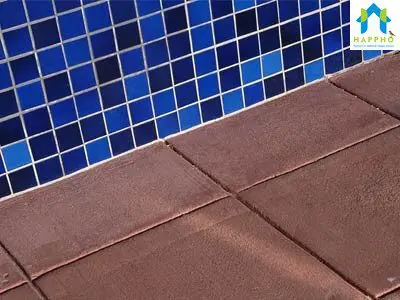
Advantages:
- Corrosion Resistant.
- Resistant to plastic deformation
- Water proof and easy to clean
- Fire resistant
The tiles can take appearance of any look like marble, terracotta etc.
B. Vitrified Tiles:
They are ceramic tiles with high level of vitrification and less water absorption. Vitrification is development of glass phase inside tile during firing process.
Advantages:
- Better mechanical resistance
- Scratch resistance
- Gives grandeur and long life span
- Fire resistant
Disadvantages:
- High Cost
4. Vinyl Flooring
Vinyl flooring is done using VCT(Vinyl Composite Tiles). They are composed of colored polyvinyl chloride (PVC) chips formed into solid sheets of varying thicknesses (1/8″ is most common) by heat and pressure. Floor tiles are cut into modular shapes such 12″ x 12″ squares or 12″ x 24″ rectangles.
In installation the floor tiles or sheet flooring are applied to a smooth, leveled sub-floor using a specially formulated vinyl adhesive or tile mastic that remains pliable. In commercial applications some tiles are typically waxed and buffed using special materials and equipment.
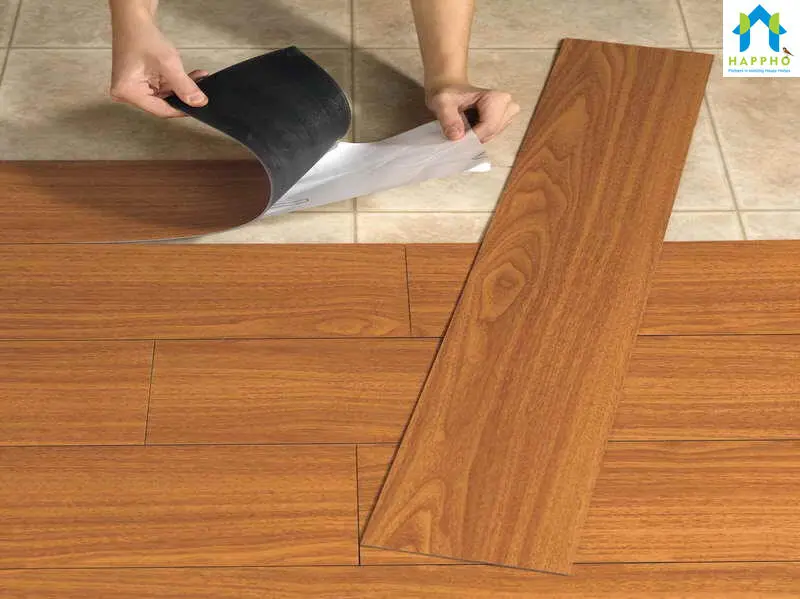
5. Wooden flooring
Wood flooringis any product manufactured from timber that is designed for use as flooring, either structural or aesthetic. Wood is a common choice as a flooring material and can come in various styles, colors, cuts, and species. Bamboo flooring is often considered a form of wood flooring, although it is made from a grass (bamboo) rather than a timber. It is generally adopted for better aesthetic look and generally found in commercial places.
- All kinds (listed below) of wood flooring are available in solid wood / laminated wood (a thin veneer layer is laminated to a layer of wood which is sanded and refined many times).
- Laminated flooring is better suited to kitchen.
- Proper margins should be left while installation to account for expansion and contraction wrt changes in temperature and humidity.
- Desirably used for interior flooring only
- Hardness of Wood flooring can be compared to marble, while wood flooring is available in 45 different colors and shades
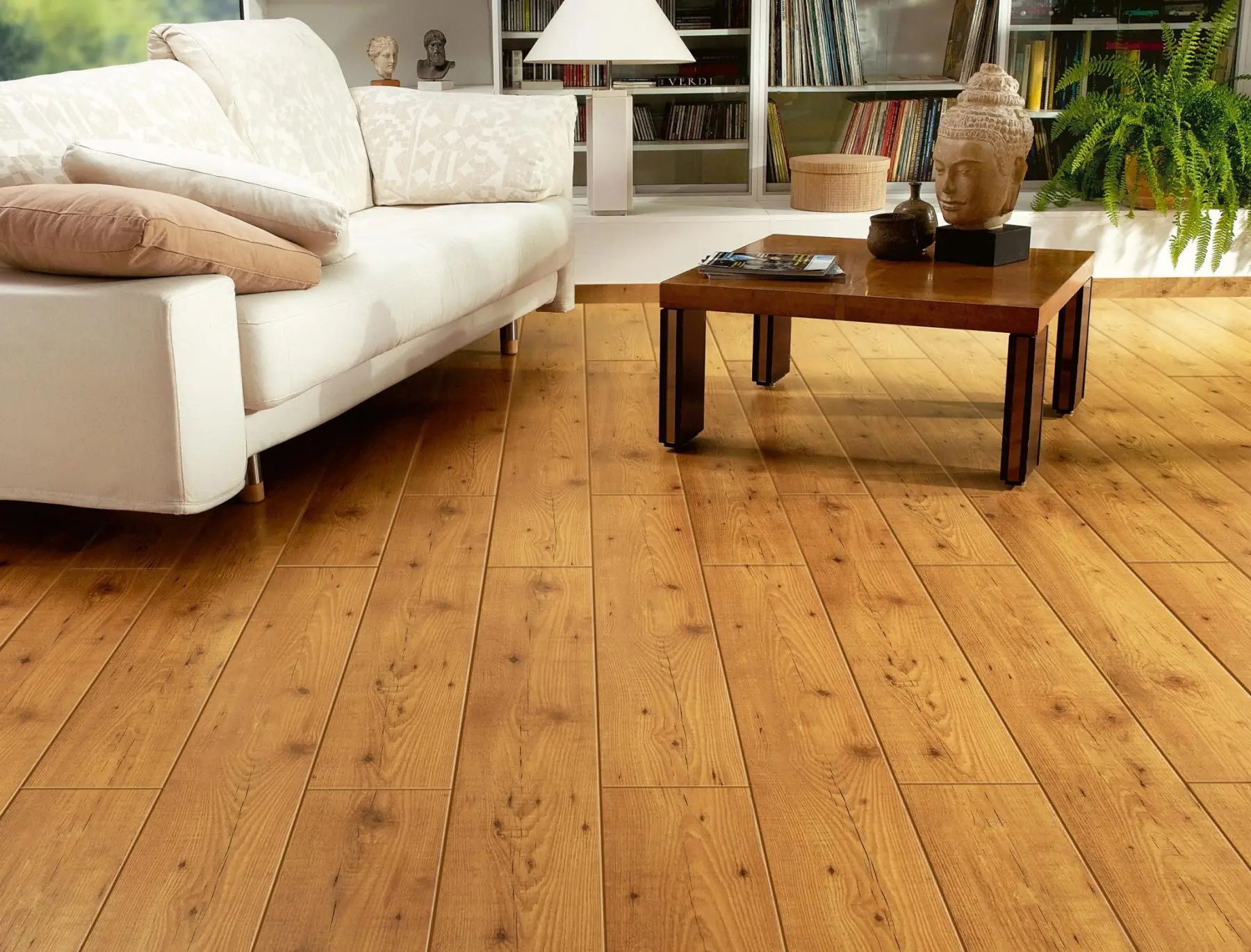
Disadvantages:
- It should be regularly cleaned either swept/ Vacuumed any peck of dust can create scratches on the floor
- Excess water can damage the flooring
- Exposure to Sun may also cause damage, should the floor has to be well protected by elements.
Types of Wooden flooring:
- Strip Flooring: It consists of a narrow and thin strip of wood joined to each other by tongue and groove joint.
- Plank Flooring: Wider planks are used which are also tongued and grooved.
- Heavy wood block flooring: These are made of thicker pieces of wood cut in short lengths ranging from 5 cm to 10 cm so as to form a block which are set with end of grains exposed.
- Fabricated wood work: These are generally adopted in large scale constructions. This consists of small scale rectangular blocks which are tongue and grooved in all sides
6. Natural Stone Flooring
When flooring is done with natural stones it is called stone flooring. They provide rich surface finish and provide a timeless unique appearance. Stone flooring is laid in the same way as tile flooring on a prepared sub surface with the adhesive evenly spread on it, with base mortar to be 25mm thick.
Depending on the types of Stone used, stone flooring can be further classified into:
A. Marble Flooring
Marble is a highly durable stone that exists in almost every color due to the variability of component minerals. Marble tile can have multiple finishes from polished to honed and brushed to tumbled, this classic floor tile is fit for any room in your home.
Disadvantages:
- Marble stone is cool under foot so in areas where temperature is usually low for a longer duration, you may want to mix this flooring type with other flooring types to give warmth to a design.
- They are smooth and not slip resistant unlike Granite.
- Marble is quite expensive. If you want a near pure white look to a space, you will need to purchase expensive marble stone,
- Marble is heavy in weight so structure strength of the underlying area should be ascertained before putting it.
- Require routine maintenance, Less durable than granite.
- Not suitable for high traffic area as it may lose shine.
B. Granite Flooring
Granite is a hard and tough stone that comes from ingenious rocks and is denser and have more compressive strength when compared to marble stones. Granite stone is laid on the base coat with 20 mm thick cement mortar 1:3 and joint should be filled with cement mixed with pigment. After curing it should be polished.
Disadvantages:
- More maintenance than Marble as leaves stains easily.
- More expensive than Marble
7. Brick Flooring
Bricks are the trusted building material which are being used since centuries and are trusted for durability and versatility.
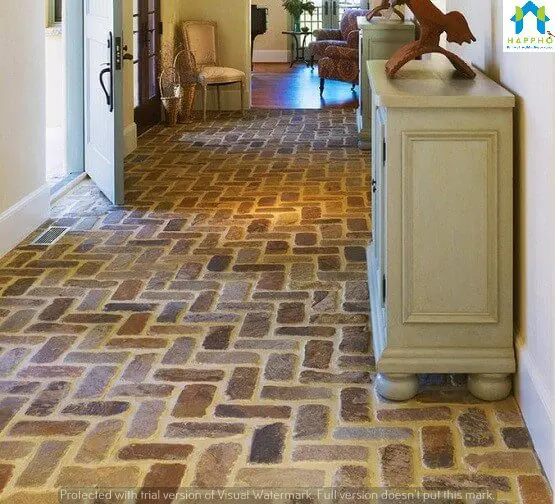
Advantages:
- They are totally fire resistant
- They are fade resistant
- Brick flooring can be made into different patterns giving different look.
- Bricks are the most durable and can withstand traffic, blunt impacts and also water absorbent and not damaged easily, so they can be useful in footpaths.
- They offer proper grip for walking.
- They will neither crack or chip
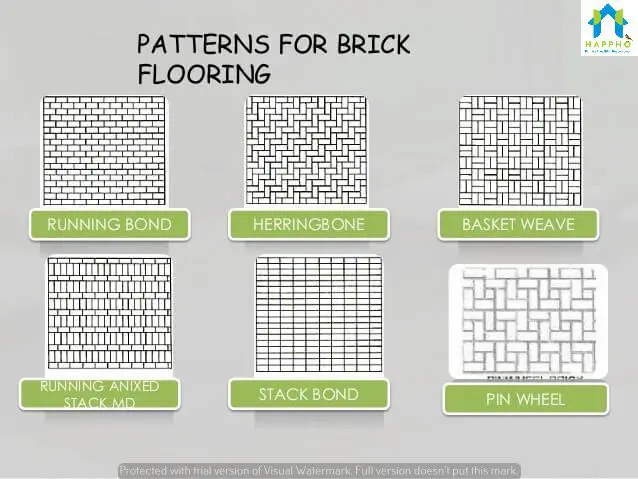
Disadvantages:
- Weight: Since bricks are so dense and heavy, they can be impractical for installation in some areas without proper support. This means that brick floors may not be ideal for use above the first floor.
- Inflexibility: Brick flooring is extremely hard, which means that it can be hard on your feet and dangerous if you fall on it, which can be a concern for young children and the elderly.
- Mold: Though brick won’t be damaged by water, it is extremely absorbent, and will soak up water and other liquids if you don’t quickly clean them up. This creates a damp, dark environment that can promote mold growth if not properly cleaned.
8. Glass Flooring
Glass floorsare made with transparent glass when it is useful to view something from above or below; whereas translucent glass is used when there is no need to view through. In either case, toughened glass is usually chosen, for its durability and resistance to breakage.

Advantages:
- Useful for Tourist attractions
- Aquariums





